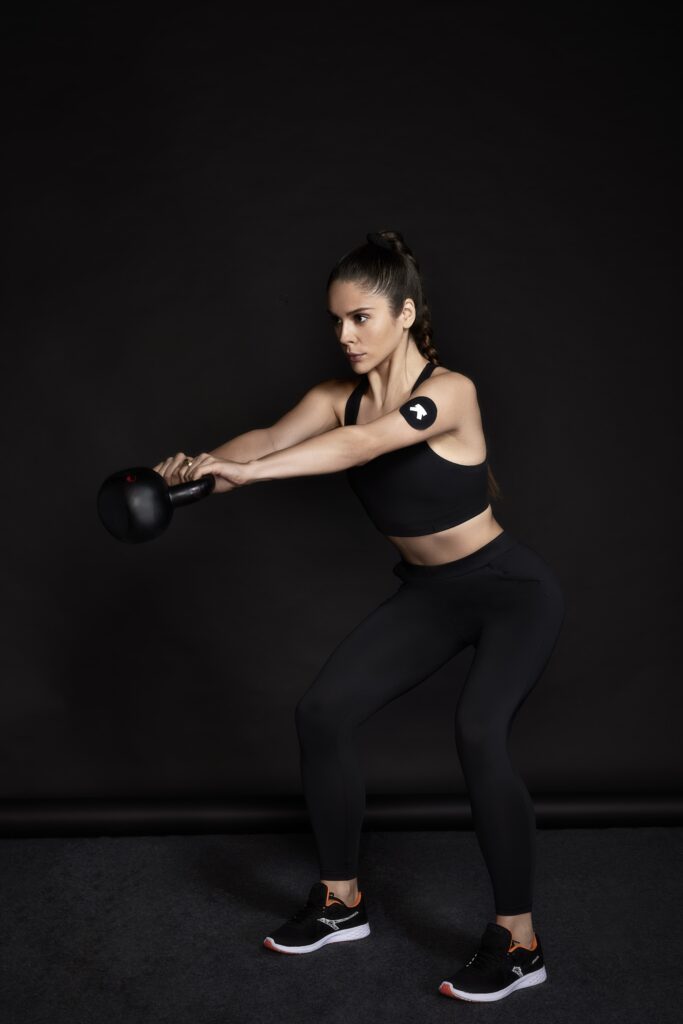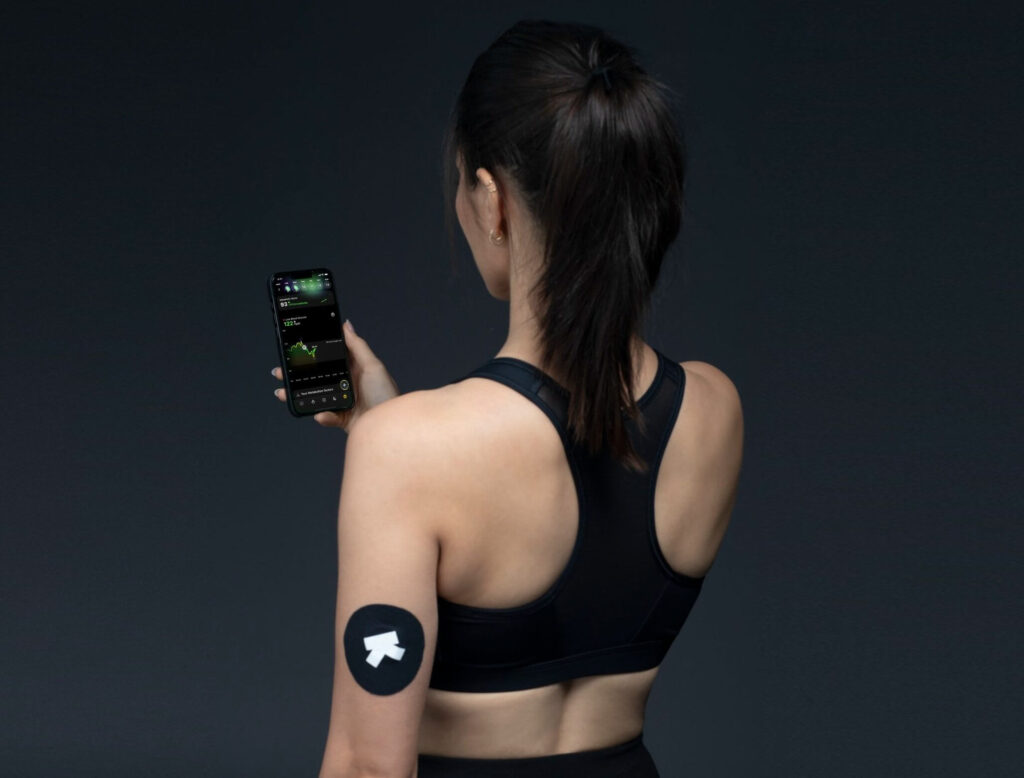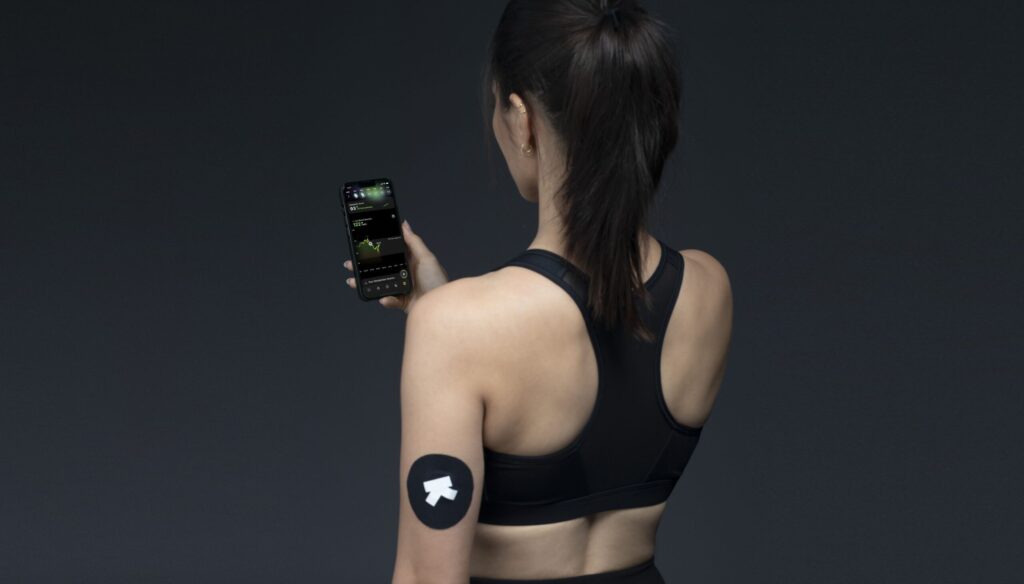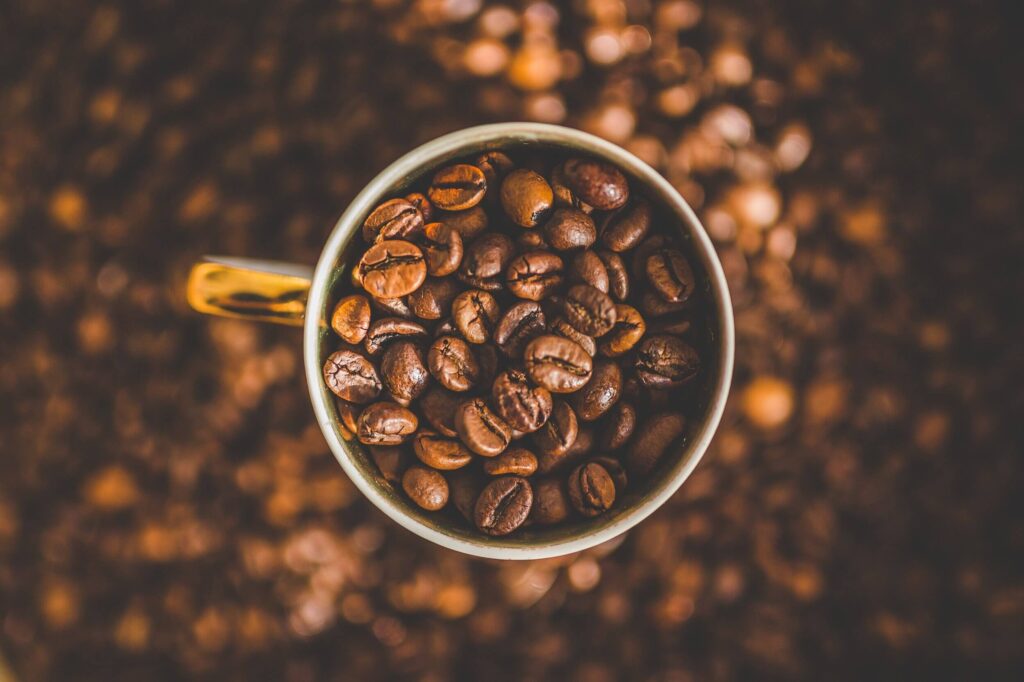In the first part of this series, we explained how metabolic health is intimately tied to Ultrahuman M1 and its metrics.
In this part, let’s understand how it pushes you to act on the insights it provides about your glucose biomarkers.
According to the nudge theory, positive reinforcements and actionable insights prompt behavioural changes.
So, are you experiencing this transformation too while tracking your glucose levels?
Let’s get acquainted with the nudges.

Highlights
- When you indulge in excessive quantities of simple carbs and sugar, the body is fed with more glucose than is actually required which can cause blood sugar spikes and crashes,
- Hyperglycemic events cause your blood glucose to rise above 120 mg/dl.The device will prompt you to walk or stretch in the advent of such an event,
- Logging your food is crucial as it helps you to get a clear understanding of what foods are causing fluctuations in your blood glucose levels.
What do nudges mean on the platform?
The Ultrahuman app consistently gives you nudges or notifications on key events of the day. The M1 live with bluetooth connectivity will give you instant updates without scanning, but it’s important to note that for the M1, you would have to scan the sensor to receive your updates. (Related: https://blog.ultrahuman.com/)
The idea behind these nudges is to give you live updates and inform you whether you are maintaining a check on your key parameters. Nudges work as a kind of makeshift guide and motivator to ensure that you are maximizing your score and following a correct pattern of nutrition, exercise and sleep as per your body’s requirements.
Why do you see specific nudges on the app, how does that work?
The app provides you with specific nudges for multiple reasons.
1.Hyperglycemic events: These are events which cause your blood glucose to rise above 120 mg/dl. The app will give you the indication to walk or stretch should such an event arise, since experiencing raised glucose levels is detrimental to your energy levels. Frequent hyperglycemic events may also lead to the occurrence of metabolic diseases.
2.Glucose crash: Glucose crashes can occur due to certain high GI Foods and the app teaches you ways to optimize these crashes so as to avoid them in the future.
3.Gluconeogenesis events: These spikes occur due to workouts, they are healthy for you and help in improving your metabolic score.
4.Ideal glucose range: This nudge by the app reminds you that you are having a great day and that your glucose levels are in an ideal range. If you feel good, and are working at peak productivity levels, then it is possible that you are well within the recommended glucose range.
5.Epic starts to the day: It is important to avoid spikes and crashes early in the day, during sunlight hours, when our bodies are metabolically at their strongest levels. At such times, the app gives you the motivation you need to keep you on track.
6.Primed for activity: The app gives you a notification when your glucose levels are at an ideal range for physical activity or a workout to ensure that you can crush that activity at peak performance levels.
7.Nocturnal activity: The app measures your glucose levels overnight and updates you on whether your control was in check. Good glucose control occurs with a healthy diet, improved sleep quality and meal times and well-managed levels of stress.

What are Ultrahuman 30 nudges with deep health insights?
The Ultrahuman app has got your back by providing you with a comprehensive list of nudges with deep health insights to optimize your metabolism:
1.High average glucose notification
Notification: Your average glucose for yesterday was 110 mg/dL (+10 than the max target for average glucose).
This notification generally gets calibrated at 10:00 am local time. This metric provides you with a view of how your glucose levels were the previous day.
The ideal range to be in is between 70 and 100 mg/dl of blood glucose; 100 mg/dl is considered to be the upper limit, so if your glucose levels exceed this limit you will receive a notification the next day.
The rise in glucose levels could be explained by you providing your body with more glucose than it needs, maybe through carbs or simple sugar. Another reason for high glucose levels could be a high level of stress or inadequate sleep. Ensure that you are not going beyond this point so that you can maintain good metabolic health.
2.Rising average glucose levels
Notification: Your average glucose trend for the past 3 days is on an upward trend. This could happen due to low levels of rest or poor sleep quality. Take it easy today.
This notification is provided when your average glucose levels are rising over the past three days. This signifies that you have been over-fuelling your body which now requires adequate rest and recovery.
Poor sleep quality causes elevated glucose responses in your regular meals. Along with your body not getting adequate rest to recover, poor sleep causes glucose spikes and crashes which can further hamper the process of recovery.
This nudge can also provide you with data on whether you are over-fuelling your body with your workouts (over the course of three consecutive days) and hence, if you need to slow down the pace and take it easy the next day.
3.Glucose crashes
Notification: Glucose crashes can lead to subsequent hunger peaks. Optimize foods that crash your blood glucose to manage hunger levels.
Limit: One notification per food log window (two hours), as there might be multiple crashes for a food log.
Glucose crashes can occur due to certain high GI Foods and the app teaches you ways to optimize these crashes so as to avoid them in the future.
When you indulge in excessive quantities of simple carbs and sugar, the body is fed with more glucose than is actually required, which raises blood sugar levels. In an attempt to bring down the blood sugar levels, the body produces insulin to combat the rise and this causes blood glucose to decrease and cause a crash in energy levels.
This process is called a glucose crash and causes tiredness and lethargy. The mid-afternoon slump which most people experience may possibly be a glucose crash.
Glucose crashes below 70 mg/dl cause a condition called hypoglycemia and can lead to the occurrence of metabolic diseases going forward. Some symptoms include tiredness, shakiness, anxiety, sweating, hunger, irritability, fast heartbeat, pale skin, hunger etc.
There are several ways you can avoid glucose crashes. These are
- Eating complex carbs including whole food grains like quinoa and whole wheat items. These do not give an excessive spike,
- Adding more fibre and protein to your meals which can help smoothen the glucose response curve,
- Fermented foods like yoghurt or sourdough bread may have a slightly better glucose response than the non-fermented versions,
- Follow this sequence for eating – fibre > proteins> carbs > simple sugars. Eating in this order can improve your glucose response.
4.Peak trainer
Notification: You crossed the 140 mg/dL peak glucose target 16 {past peak frequency} times in the last 7 days. For the next 7 days try not to cross the 140 mg/dL peak glucose target more than 5 {new peak frequency} times.
This is a notification that provides you with insights on the week gone by. The optimal target here is to not cross the 140 mg/dl peak 0 times so you can avoid glucose spikes and subsequent hyperglycemic events and crashes.
For example, if you crossed the peak nine times during the week, the sensor learns your eating habits, exercise and nutrition patterns and gives you the target to achieve for the next week. As you progress, your final goal should be to bring this number down to 0.
5.Reminder to log food
Notification: You haven’t logged enough food entries in the past 3 days. Logging your food events during the learning phase will help you unlock more insights about your metabolic health.
We covered the importance of food logging in Part 1 of the series. Logging your food into the app is crucial as it helps you get a clear understanding of what items are causing fluctuations in your blood glucose levels. For example, foods with multiple sources of ingredients could have one item that spikes your blood sugar. The timing of the meal can also make a difference; a meal that gave you a score of 10 in the morning may not give you the same response later in the evening due to your body’s deteriorating metabolism towards the nighttime.
6.Reminder to scan data
Notification: You haven’t scanned your sensor in the last 7 hours. Please scan your sensor to avoid missing glucose readings.
If you have the Ultrahuman M1, you will need to scan the sensor to get your data.
The app nudges you as a reminder to scan your data in case you forget to do so for a couple of hours. The objective of this nudge is to keep you aware of your readings throughout the day. For example, a certain meal may have caused a sharp glucose spike which you were unaware of as you had not scanned your sensor. Post such a meal, it would be advised to take a walk or stretch it out to bring down your glucose levels back within the target range.
7.Food analysis report
Notification: Click to check how your last meal performed.
After logging in your food data into the app, it takes two hours for the sensor to provide you with your food scores after taking into account the glucose response to that particular food. Ideally, it takes about an hour or so for your food to metabolize.
8.Last meal window
Notification: Your last food intake timing for yesterday was around 10.30 pm. Try eating before 10 pm today for better sleep quality and improved metabolic score.
Ultrahuman M1 analyzes the timing of the food consumed in the night just before you go to sleep, so it can understand what time is optimal for you to eat before going to bed. After calibrating your data, this nudge will provide you with an update by 3 pm local time.
Your last meal time the previous day is taken into account as the last food log for yesterday and the data is only sent to you if the meal takes place after 8 pm. For example, if you ate at 10:30 pm and had varying nocturnal glucose and a lower metabolic score, the app may nudge you to eat at 10 pm for optimal sleep.
9.Log activity/food behind this crash
On days when the app detects a glucose crash, i.e. a fall of glucose below 70 mg/dl or more in 30 minutes and there is no log entered for that crash, you will receive a notification. It is recommended to input the data so that the app can provide you with accurate details as to what food or activity caused the crash.
10.Glucose rise
The app gives you a nudge when the average blood glucose levels rise by 20 mg/dl over the median blood glucose levels. This is an indication for you to add some form of activity to bring down the levels to a sustainable level, and it also suggests that you make tweaks in your existing diet so as to avoid this rising level of glucose.
11.Hyperglycemic event detected!
Whenever the glucose value rises above 120 mg/dL, the app will send a notification along with actionable insight.
Hyperglycemic events– These are events which cause your blood glucose to rise above 120 mg/dl. The app will give you the indication to walk or stretch should such an event arise, since experiencing this state of raised glucose levels is detrimental to your energy levels. and it is recommended for you to take a walk or stretch to bring these levels within the ideal range. Frequent hyperglycemic events may also lead to the occurrence of metabolic diseases.
12.Glucose Readings missed notification!
Notification: Your glucose data has not been received in the last 30 minutes.
If your glucose data has not been received in the last 30 minutes, make sure your glucose sensor is connected to the app. Scan the sensor again in case of a disrupted internet connection.
13.Glucose first data notification!
This is the first nudge you receive when your sensor gets connected to the app. Your cyborg journey will begin soon after.
14.Good / Great / Insane metabolic control today
This nudge provides you with the motivation you need to continue with your routine and will also inform you that you have had minimal glucose spikes and crashes. This allows you to maximize your metabolic score and various metabolic vectors.
There are 3 scores
Good: 80+
Great: 85+
Insane: 90+
15.Good /Great / Insane start the day
This nudge tells you that you have minimal spikes or crashes during the first half of the day, which helps to improve your body’s metabolic response to food throughout the rest of the day.
There are 3 scores
Good: 80+
Great: 85+
Insane: 90+
16.Your first blood glucose spike, what does it mean?
Notification: Foods that spike your blood glucose aren’t necessarily bad for you. It just means you need to understand how to optimize these foods according to your lifestyle. Read more…
This is the first notification you will receive for a glucose spike; which could be due to certain foods or stress.
There are several ways you can avoid glucose spikes. These are
- Eat foods with low GI to ensure that your glucose levels do not spike beyond recommended levels, but remember that it important to eat in moderation,
- Go for a short walk after every meal to bring down blood glucose levels,
- Maintain lower levels of stress,
- Ensure that you are doing regular exercise,
- Get adequate sleep to ensure a stable response to glucose.
17.Two-day metabolic score improvement streak
This nudge tells you that your metabolic score is improving, way to go! The idea is to work towards a one-week streak and eventually a multiple-week streak.
18.Top Food Zones
Notification: Your last 3 food events had great metabolic responses and resulted in higher zone scores. Way to go!
This nudge is provided when your last three meals have a score which is ≥ 6. You will receive a notification after the third meal is processed.
Food scores are tracked between 0-10, a higher food score indicates that such foods are good for your metabolic health. If the food scores are between 6-8, you need to experiment with foods to produce a better metabolic score.
For example, an omelette with one teaspoon of oil rather than two teaspoons can produce a score of 10. Therefore, it is better to reduce the oil content. Scores below 5 elicit a poor metabolic score and you will either need to change the timing of the food consumed or probably eliminate it from your diet.
Within two hours of eating, you will get an analysis of whether the food is in the top zone or bottom zone.
19.Food zone score performance, weekly
Notification: In the last 7 days you had XYZ Top zone foods. Way to go!
This notification gives you a picture of the week gone by and the number of times your score hit the top food zones and bottom food zones. Top food scores are those ≥ 5 and bottom food scores are those which are 5 ≥. The app teaches you techniques to optimize bottom foods zones ie those foods hampering your metabolic score.
In the end, here are basic tips to optimize bottom foods
- Eating your dinner 2-3 hours before bed to ensure you digest your food well and do not see higher glucose levels during sleeping hours,
- Walking after a meal to stabilize glucose levels,
- Portion size your bottom food zones,
- Try following this sequence for meals: fibre > protein > carbs > simple sugars,
- Add more low GI complex carbs instead of high GI simple carbs and sugar.
20.Average metabolic score, week over week
Your average weekly metabolic score for the week is a culmination of all the activities that you performed over the week.
The average metabolic score is calculated based on three key parameters
- Glucose variability:
Glucose variability can be defined as the consistency in your glucose levels throughout the day. It is important to maintain a low glucose variability, ideally below 12%, to ensure that there is less oxidative stress on your body.
- Average glucose:
Another parameter which is measured by the sensor and which we need to optimize is our HbA1c levels, which are also known as glycated haemoglobin. This is a measure of your average blood glucose level over the last two to three months.
- Time in target:
The ideal range is 70-100 mg/dl. The goal is for your blood glucose range to stay within the target score for as long as possible to maximize your score, which will further improve your cognitive ability throughout the day.
21.That’s a good spike
Gluconeogenesis events: These spikes occur due to workouts, they are healthy for you and help to improve your metabolic score. It is the process of producing glucose from noncarbohydrate sources such as glycerol, lactate, pyruvate, and glucogenic amino acids.
Gluconeogenesis occurs during intense exercise bouts that can occur due to the breakdown of muscle protein – especially during the absence of carbohydrates. If you are an athlete, you can prevent the loss of muscle protein by fueling correctly and consuming enough carbs can help if you are training for long at a high intensity. Adequate protein intake could help in curbing the loss of muscle mass.
You need to input your activity data in the app without logging in to the food at the same time. It should not be a combined event.
22.Nocturnal hypoglycemia suspected!
Hypoglycemia is a situation where your glucose levels fall below the baseline of the recommended range. This generally happens when your body is under-fueled. Hypoglycemia can occur when you have not eaten for long or after consuming meals high in sugar, where your body ends up producing more insulin than it needs.
Nocturnal hypoglycemia takes place in individuals whose blood sugar drops below 70 mg/dl during sleep.
Various factors can cause blood sugar drops:
- Skipping meals,
- Working out close to bedtime,
- Drinking alcohol before bedtime,
- High altitudes, hot and humid weather conditions.
One can try to tweak the first three habits mentioned above to correct the cases of hypoglycemia. If this is taking place often, it is advised to consult with a doctor.
The app identifies this condition by measuring your blood glucose levels and providing you with a nudge for nocturnal hypoglycemia in the morning.
23.Sensor expired!
This nudge is provided when your two-week period with the sensor gets over. You need to remove the sensor and apply a new one to restart your journey.
How to Remove Ultrahuman M1 CGM sensor?
24.Oxidative stress
Oxidative stress occurs when there is an imbalance between free radical activity and antioxidant activity. These free radicals are required to fight off pathogens, which can cause infections in the body
Everyday at 11 am, the oxidative stress levels will be calculated for the previous two days and sent as a nudge.
If average glucose variability ≤ 12%, you will receive a nudge, this means that there is less oxidative stress on your body and you are advised to maintain these levels.
If average glucose variability > 12%, you will receive a nudge, this level of glucose variability can increase the oxidative stress on your body, which eventually translates into poor metabolic health.
25.Become a Cyborg again
The user will receive this nudge once the sensor has expired and the user has not applied his new sensor. One will receive it two days after the sensor has expired.
26.Nice and stable
Maintaining stable glucose levels can help one maintain improved energy levels and cognitive performance throughout the day. The ideal range of glucose levels is 70-100 mg/dl. The goal is to stay within the target score for as long as possible to maximize your score, which will improve your cognitive ability throughout the day.
This notification is provided when you are in the target range between 10 am and 5 pm.
27.Introducing the Metabolic Score
Metabolic score reflects overall metabolic health. It relies on glucose variability, average glucose and time in target metrics and varies from 0-100. The metabolic score is prompted 3.5 hours after the first time the CGM is put on. It is then calculated continuously through the day and gets reset at 12 am every day.
28.Good nocturnal glucose control
Good nocturnal glucose control ensures that your glucose levels are in the target range when you sleep. It is calculated from 12 am to 6 am. Good nocturnal glucose control ensures that you are recovering efficiently and this enhances your performance for the following day.
This is achieved when you sleep regularly on time, eat a nutritious diet and exercise regularly.
29.Milestone unlocked
Notification: You’ve unlocked a new personal best metabolic score of <88> yesterday, beating your previous best score of <85>.
This nudge is provided when you beat your highest metabolic score. The nudge is triggered every day at 9:30 am. Your aim should be to keep improving your score from the last time and ensure that you are maintaining green streaks for the week.
30.Primed for physical activity
Notification: The next 3 hours are primed for physical activity based on your recent fuelling trends. You might see improved workout performance and results for work done during these hours.
Maintaining optimal levels of glucose during your workouts helps to fuel your neuromuscular and cardiovascular systems. Poor fuelling can lead to loss of muscle protein and nutritional deficiencies.
The sensor analyses your fueling data and provides you with three-hour windows based on your optimal fueling time. Try to get in a workout for optimal performance during these three-hour ranges.
Conclusion
Real-time nudges are essential to help you better understand what foods and activities are causing variations in your blood glucose levels. Ultrahuman M1 can help you learn more about these variations by monitoring your body’s responses during various parts of the day. These variations will be different from person to person and it is important for each cyborg to follow their own journey based on their lifestyle. Understanding the variations in glucose levels will also help you feel more energised and focused and will allow you to perform better at your workouts and reduce the risk of contracting metabolic diseases.
Disclaimer: The contents of this article are for general information and educational purposes only. It neither provides any medical advice nor intends to substitute professional medical opinion on the treatment, diagnosis, prevention or alleviation of any disease, disorder or disability. Always consult with your doctor or qualified healthcare professional about your health condition and/or concerns before undertaking a new healthcare regimen including making any dietary or lifestyle changes.
References







